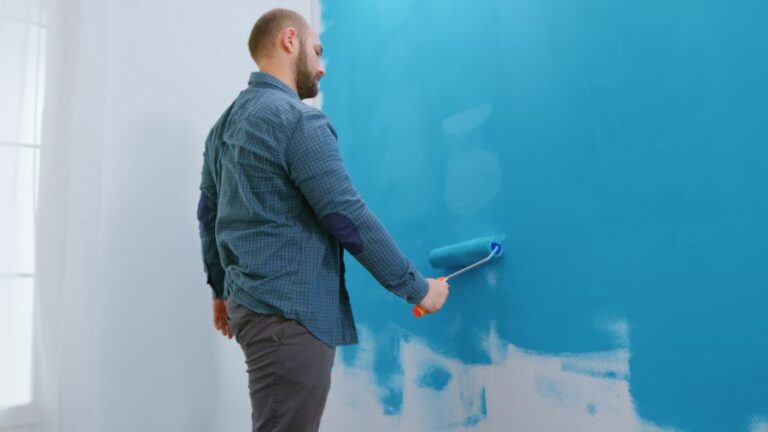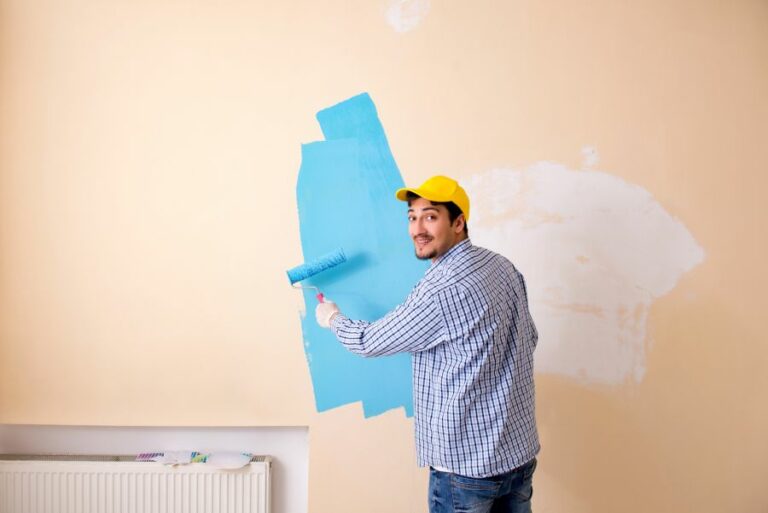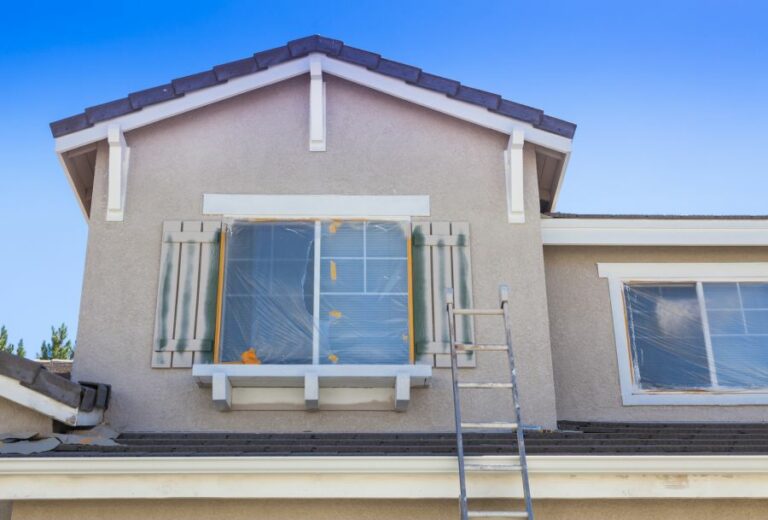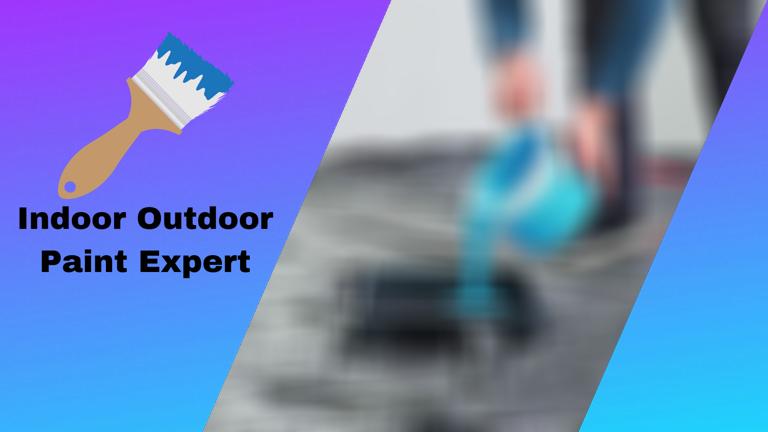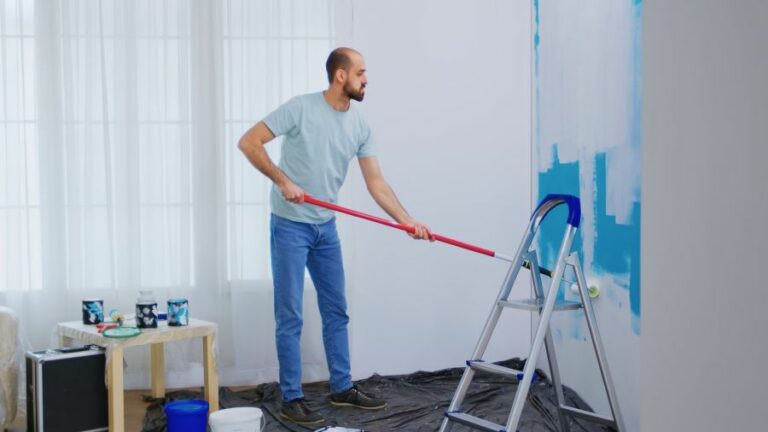Paint Adhesion Boost: Mastering Surface Profiling
Looking to create a smooth, long-lasting paint job? We’ve got you covered! With our expertise in surface profiling, we can help you achieve that paint adhesion boost you’ve always desired. By mastering this critical step in the painting process, you’ll achieve optimal results and save valuable time and resources.
Paint adhesion boost: mastering surface profiling:
Surface profiling is a process that modifies a material’s surface to promote better bonding of coatings, adhesives, and paints, ensuring long-lasting performance. To master surface profiling, choose the appropriate preparation method for the substrate material, assess the surface profile using gauges and cleanliness assessments, and follow the paint manufacturer’s guidelines. Implement a quality control plan to ensure consistent results.

Elevate your paint adhesion skills with our in-depth guide on surface profiling techniques! Unveil the secrets behind achieving optimal bonding, durability, and an impeccable finish. Read on to transform your painting projects and boost their longevity.
Contents
- 1 Enhancing Paint Adhesion: A Guide to Surface Profiling
- 2 Strategies for Improving Paint Adhesion Effectiveness
- 3 Examining the Impact of Surface Texture on Coating Adhesion
- 4 Promoting Paint Adhesion to Substrate Surfaces: Key Methods
- 5 Influential Factors for Coating-Substrate Adhesive Strength
- 6 Identifying Reasons for Paint Adhesion Test Failures
Enhancing Paint Adhesion: A Guide to Surface Profiling
• Understanding Surface Profiling
Surface profiling is a crucial aspect of achieving optimal paint adhesion in various applications, ranging from automotive to aerospace, marine, and construction industries.
This process involves modifying a material’s surface to promote better bonding of coatings, adhesives, and paints.
Proper surface preparation ensures better paint adhesion and long-lasting performance, reducing potential issues such as peeling, delamination, and corrosion.
• Choosing the Right Method for Surface Preparation
There are several methods to achieve the desired surface profile for optimal paint adhesion. The choice depends on factors such as the substrate material, the coating system, and environmental considerations. Here is an overview of common surface profiling techniques:
– Abrasive Blasting
This method involves forcibly propelling abrasive particles against the substrate using compressed air, water, or centrifugal force.
Abrasive blasting can efficiently remove rust, old paint, and contaminants while creating a rough surface profile that enhances paint adhesion. Common abrasive materials include sand, steel shot, glass beads, and garnet.
– Mechanical Surface Preparation
Mechanical methods such as grinding, sanding, and scarifying use abrasive tools or machines to remove surface contaminants and create the desired surface profile.
These processes are suitable for non-ferrous metals, concrete, and other substrates where other methods might not be applicable or cost-effective.
– Chemical Pre-treatment
Chemical pre-treatment involves using solvents, detergents, or etchants to clean the surface and improve paint adhesion. This method is often used in combination with other surface preparation techniques, as it aids in removing oil, grease, and other contaminants.
Additionally, chemical pre-treatment is commonly used for materials such as aluminum and galvanized steel that require special surface treatments.
– Laser Cleaning
Laser cleaning employs high-energy laser beams to remove contaminants and create a rough surface suitable for paint adhesion.
This method is highly effective for specific applications, including aerospace and nuclear industries, where traditional surface preparation techniques may pose safety or environmental concerns.
• Assessing the Surface Profile for Optimal Paint Adhesion
Correctly measuring and evaluating the surface profile after preparation is essential for ensuring optimal paint adhesion. Several tools and methods can help assess the surface profile, including:
– Surface Profile Gauges
These instruments measure the peak-to-valley depth of a surface profile, which can be correlated to how well the paint will adhere. Different types of surface profile gauges include replica tape, needle, and stylus instruments.
– Surface Cleanliness Assessment
Assessing the cleanliness of a prepared surface is crucial for achieving the best paint adhesion. Surface cleanliness inspection includes visual inspection, solvent rub tests, and using contaminants detection kits.
– Adhesion Testing
Adhesion testing confirms if the paint system bonds adequately with the substrate. Various methods, such as pull-off adhesion testers, tape tests, and knife tests, can be used to evaluate the adhesion quality.
• Practical Tips for Achieving High-Quality Surface Profiles
To ensure optimal paint adhesion, consider these practical recommendations:
- Always follow the paint manufacturer’s guidelines for surface preparation, as different coating systems may require specific preparation techniques and surface profile depths.
- Choose the most suitable surface profiling method for the substrate material and application, considering factors such as efficiency, cost, environmental impact, and workplace safety.
- Use surface profile gauges, cleanliness assessments, and adhesion tests to confirm that the prepared surface meets the required specifications before applying the paint system.
- Implement a quality control plan for surface preparation and paint application to ensure consistent results and long-lasting performance.
• Conclusion
Mastering surface profiling is essential for achieving excellent paint adhesion in various industries and applications.
By selecting the right surface preparation method, evaluating the surface profile correctly, and following best practices, you can boost paint adhesion and ensure long-lasting, high-quality results.
Strategies for Improving Paint Adhesion Effectiveness
Every painting project, whether it’s a simple touch-up or a complete makeover, requires proper preparation and techniques to ensure that the paint adheres to the surface effectively.
• Surface Preparation: The First Step for Excellent Adhesion
Before you start painting, it’s crucial to prepare the surface correctly. Thorough cleaning and proper treatment will ensure that your paint adheres to the surface and lasts longer.
– Cleaning the Surface
Begin by eliminating dirt, dust, or any existing loose paint from the surface. Clean the surface with soap and water or use a specialized cleaning agent, such as TSP (Trisodium Phosphate), to remove grease or stains. Rinse the surface thoroughly and allow it to dry before proceeding to the next step.
– Sanding the Surface
For optimal adhesion, it’s essential to create a slightly rough surface for the paint to grip onto. Sand the surface using medium-grit sandpaper (approximately 100 to 120-grit) in a circular motion.
Be cautious not to over-sand or cause damage to the surface. Wipe away any sanding dust with a tack cloth or a damp rag.
– Repairing Surface Imperfections
Inspect the surface for any cracks, holes, or imperfections. Use recommended filler materials, such as putty or caulk, to repair these areas. Allow the filler to dry completely and then sand it lightly to create a smooth, even surface.
– Applying a Primer
Applying a primer is an essential step to ensure that the surface is sealed and prepared for paint. Select a high-quality primer compatible with the type of paint you’ll be using.
Oil-based primers generally work well with most surfaces, but always refer to the manufacturer’s instructions. Apply a thin, even coat of primer and allow it to dry entirely before moving on to the painting process.
• Choosing the Right Paint for Improved Adhesion
To establish impeccable adhesion, it’s critical to select paint that is specifically designed for your chosen surface. High-quality paints contain better adhesion-promoting ingredients, which ultimately lead to superior results.
Consult with a professional or refer to the paint manufacturer’s guidelines to select the appropriate paint for your project.
– Acclimate the Paint
For optimal adhesion and application, allow the paint to acclimate to the room’s temperature for a few hours before using it. Temperature fluctuations can cause paint components to separate, which can impact the overall adhesion.
• Expert Techniques for Enhanced Adhesion
– Proper Application of Paint
Consistently apply thin, even layers of paint using a good-quality brush or roller. Avoid overloading your brush or roller, as this can lead to excess paint, resulting in uneven layers and compromised adhesion. Allow each coat of paint to dry entirely before applying the next one.
– Paint in the Right Weather Conditions
Ideal painting conditions play a significant role in how well your paint adheres to the surface. Avoid painting during excessively humid or wet weather, as moisture can negatively impact the paint’s ability to dry and adhere properly.
Also, keep in mind extreme heat or cold can cause paint to dry too quickly or not at all, leading to adhesion issues.
– Use Additives to Improve Adhesion
Paint additives, such as adhesion promoters or conditioners, can significantly improve the paint’s ability to adhere to the surface.
Follow the manufacturer’s instructions and add the recommended amount of additive to the paint. Keep in mind that not all paint types are compatible with additives, so double-check before using them.
• Post-Painting Care for Long-Lasting Results
After completing your painting project, proper care is crucial to maintain the paint’s adhesion and durability. Keep the painted surface clean and free of dust and dirt, and address any surface damage immediately.
Regular maintenance will help prolong the life of your paint job and maintain optimal adhesion. By implementing these expert tips and recommendations, you can ensure that your paint adheres well to the surface, guaranteeing a successful and long-lasting paint job.
| How do you increase the adhesion of paint? | |
|---|---|
| 1. Surface preparation | Clean the surface thoroughly by removing dirt, dust, grease, or any loose and peeling paint. You can use a mild detergent or degreasing agent, and wash the surface with a sponge or a soft brush. Rinse the surface with clean water and allow it to dry before applying paint. |
| 2. Sanding | Lightly sand the surface with fine-grit sandpaper to create a slightly roughened texture. This will help the paint adhere better. After sanding, wipe the surface with a damp cloth to remove any sanding dust. |
| 3. Priming | Apply a high-quality primer that is compatible with the type of paint you are using. Primers help to create a uniform surface and increase paint adhesion. Allow the primer to dry according to the manufacturer’s instructions before applying paint. |
| 4. Paint selection | Choose the correct type of paint for the specific surface and application. Some paints are specifically designed to provide better adhesion on various surfaces. For example, use a masonry paint for painting concrete or brick surfaces, or a metal paint for painting metal surfaces. |
| 5. Proper application | Apply the paint according to the manufacturer’s instructions using appropriate brushes, rollers, or sprayers. Applying paint in thin, even layers will help to improve adhesion and minimize the risk of peeling or flaking. Allow each coat to dry thoroughly before applying the next coat. |
Pay attention to the temperature and humidity when painting, as both can affect paint adhesion. For best results, paint when the temperature is between 50-90°F (10-32°C) and the humidity is below 85%. Avoid painting in direct sunlight or on windy days.
Examining the Impact of Surface Texture on Coating Adhesion
Surface roughness is a crucial parameter to consider when examining the adhesion of coatings to substrates. The roughness of a surface has a direct impact on the interfacial bond strength and overall performance of the coating.
• Understanding Surface Roughness
Surface roughness is the measurement of the microscopic irregularities on a material’s surface. These irregularities are the result of different factors such as machining, polishing, or other surface finishing operations.
Surface roughness can be quantified using various parameters, including the average roughness (Ra) and the root mean square roughness (Rq).
• The Role of Surface Roughness in Coating Adhesion
– Mechanical Adhesion
One of the primary reasons why surface roughness affects coating adhesion is due to mechanical interlocking. Rough surfaces have a multitude of peaks and valleys, which offers a larger surface area for the adhesive to bond to, resulting in improved mechanical interlocking.
This mechanical bond plays a significant part in enhancing the overall adhesion strength between the coating and the substrate.
– Chemical Adhesion
Aside from the mechanical bond, surface roughness can also impact the chemical adhesion between the coating and substrate.
Rough surfaces offer a higher probability for the formation of chemical bonds. When the coating comes in contact with the substrate, it interacts with the rough peaks and valleys, leading to strong chemical adhesion with the material’s surface.
– Wettability
Wettability is a critical factor that influences the adhesion of a coating to the surface. Surface roughness enhances wettability, promoting better adhesion. A rough surface allows the coating to more effectively spread and cover the substrate.
Additionally, a higher wettability encourages intimate contact between the coating and surface on a molecular level, further boosting adhesion.
• The Importance of Surface Preparation
Surface preparation is vital for achieving successful coating adhesion, as it directly impacts surface roughness.
There are numerous methods to modify the roughness of materials, including mechanical processes like sandblasting or abrasive blasting, as well as chemical processes such as acid etching or surface sol-gel treatment.
It is crucial to select the appropriate surface preparation method based on the specific requirements of the coating system, substrate material, and intended application.
• Recommended Surface Roughness Levels
In general, there is no “one-size-fits-all” solution when it comes to recommended surface roughness levels for optimal coating adhesion.
Factors such as the type of coating, substrate materials, and intended application can all impact the preferred surface roughness for achieving strong adhesion.
It is essential to work closely with coating manufacturers and industry experts to determine the optimal surface roughness for a specific application.
To illustrate the importance of appropriate surface roughness, take for example, the case of epoxy coatings. Epoxy coatings typically require a higher surface roughness than other types of coatings to achieve better mechanical adhesion.
However, for coatings that rely predominantly on chemical bonding, such as certain urethane systems, a smoother surface with appropriately designed chemistry can result in improved adhesion.
• Balancing Surface Roughness and Coating Performance
While enhancing surface roughness can improve adhesion, it is crucial to strike the right balance between roughness and coating performance. Excessively rough surfaces can induce visual defects or stresses in the coating film, leading to premature failure.
Therefore, it is crucial to optimize surface roughness without sacrificing other aspects of the system’s performance.
• Final Thoughts
Attaining optimal coating adhesion necessitates a comprehensive understanding of the relationship between surface roughness and adhesion mechanisms and careful consideration of the coating system, substrate, and application requirements.
By being mindful of the factors discussed in this article and seeking expert guidance when in doubt, it is possible to achieve strong adhesion and ensure the longevity of the coating system.
Promoting Paint Adhesion to Substrate Surfaces: Key Methods
Ensuring proper adhesion of paint to a substrate surface is pivotal to achieving a durable, long-lasting, and visually appealing paint job. Knowing the key factors that help promote paint adhesion can make all the difference in both residential and commercial settings.
• Surface Preparation Techniques
– Cleaning
An essential step in achieving good paint adhesion is ensuring that the substrate surface is clean, free from dirt, dust, and any other contaminants. Inadequate cleaning may lead to the paint not adhering properly or even peeling after a short time.
Recommendations:
- Use a clean cloth or sponge and warm, soapy water to clean the surface.
- Rinse with clean water and allow to dry before applying paint.
– Degreasing
An oily or greasy substrate surface can severely impact the adhesion of paint. Degreasing is a crucial step in removing any oily residue, especially when dealing with surfaces like metalwork.
Recommendations:
- Use a commercial degreaser, following the manufacturer’s instructions, to remove any oil or grease from the surface.
- Thoroughly rinse with clean water and allow the surface to dry before applying paint.
– Sanding
Sanding serves to remove any loose or flaking paint, as well as create a slightly roughened surface texture for improved adhesion. This can help new paint layers to grip better on the substrate surface.
Recommendations:
- Start with coarse-grit sandpaper (such as 80 to 100-grit), working your way up to finer-grit sandpaper (such as 180 to 220-grit) for a smoother finish.
- Be sure to wear protective gear, like a dust mask and safety goggles, while sanding.
– Priming
Primer is a preparatory coating that helps paint adhere to surfaces by providing a consistent base layer. It also helps seal porous surfaces, ensuring an even appearance of the topcoat.
Recommendations:
- Choose a primer appropriate for the type of paint and surface, following the manufacturer’s recommendations. Examples include a water-based primer for latex paint, an oil-based primer for oil-based paint, or a metal primer for metal surfaces.
- Apply the primer according to the manufacturer’s instructions, ensuring adequate drying time between coats.
• Environmental Factors
– Temperature and Humidity
Both temperature and humidity can significantly affect paint adhesion. Inappropriate temperature or humidity levels can result in poor coverage, prolonged drying times, or premature paint failures.
Recommendations:
- Follow the manufacturer’s guidelines in terms of appropriate application temperatures and humidity levels for the specific paint type.
- Opt for cooler, drier periods (such as early morning or late afternoon) for best results.
– Ventilation
Proper ventilation is crucial when applying paint to interior surfaces. Proper airflow helps the paint to dry evenly and minimizes problems such as trapped moisture, odors, or volatile organic compound (VOC) concentrations.
Recommendations:
- Ensure proper ventilation by opening windows and doors or using fans to circulate air.
- Avoid painting on days with extreme temperatures or humidity to minimize rapid drying or condensation.
• Choosing the Right Paint
Selecting the appropriate type of paint is fundamental in achieving the desired adhesion to the substrate surface. Different substrates and environmental conditions require specific paint formulations.
Recommendations:
- Consider factors such as indoor or outdoor application, substrate material, and existing paint when selecting the appropriate paint type.
- Consult paint manufacturers’ guidelines or seek professional advice if unsure.
• Application Techniques
Proper paint application techniques can either enhance or hinder the adhesion process. There are multiple methods, such as brushing, rolling, or spraying, which can be more suitable depending on the situation.
Recommendations:
- Choose the correct paint application method, factoring in the type of paint, surface, and desired finish.
- Follow best practices for the chosen application technique (e.g., maintaining consistent pressure and overlapping strokes with brushing).
• Conclusion
Ensuring proper adhesion of paint to the substrate surface is a multifaceted process that requires attention to various factors.
By focusing on thorough surface preparation, considering environmental conditions, and selecting the right paint and application methods, you can ensure your paint job is both long-lasting and visually appealing.
Applying these recommendations will greatly enhance the likelihood of a successful painting project.
Influential Factors for Coating-Substrate Adhesive Strength
We will discuss the various factors that determine the adhesive strength between a coating and its substrate. These factors play a crucial role in the coating system’s overall performance, durability, and lifespan.
Understanding these factors will enable you to make informed decisions when selecting coatings and substrates for specific applications.
• Surface Preparation
Proper surface preparation is the foundation for achieving a strong adhesive bond between the coating and the substrate. The overall objective of surface preparation is to create an appropriate surface profile that promotes adhesion.
– Cleaning
Before the coating application, it is essential to clean the substrate to remove any contaminants that can hinder proper adhesion. Contaminants may include dirt, dust, grease, oil, and other foreign materials.
A variety of cleaning methods can be utilized, such as solvent cleaning, alkaline cleaning, and high-pressure water cleaning. It is important to choose the right method based on the substrate material and the specific contaminants present.
– Surface Roughening
Creating a roughened surface profile improves the adhesive strength of the coating. Roughening methods include abrasive blasting, mechanical grinding, etching, and surface priming.
Each method has its advantages and limitations related to the substrate material and the desired surface profile. Generally, abrasive blasting is the most widely used method for surface roughening.
• Coating Composition
The composition of the coating itself greatly influences its adhesive strength. The following factors should be considered when selecting a coating:
– Chemical Compatibility
The coating material should be chemically compatible with the substrate to ensure proper adhesion. This is particularly crucial for reactive coatings or substrates, such as metals, that can be affected by chemical reactions leading to bond failure.
– Coating Flexibility
Coatings with high flexibility have better stress accommodation, improving their adhesive strength to the substrate. This reduced stress is particularly crucial for substrates that may experience mechanical deformation or thermal expansion.
– Cohesive Strength
The cohesive strength of the coating, which refers to its resistance to internal fracture, influences its overall adhesive strength. Coatings with high cohesive strength can withstand higher stress, ensuring better adhesive performance.
• Coating Application
The method of coating application can impact its adhesive strength. Factors to consider when choosing a suitable application method include:
– Coating Thickness
It is essential to apply the coating as recommended by the manufacturer to achieve optimum adhesive strength.
As a general rule, applying a coating too thick can cause stress build-up, leading to poor adhesion. Conversely, applying a coating too thin may lead to inadequate coverage and protection.
– Curing Conditions
Curing conditions such as temperature, humidity, and time can significantly affect the adhesive strength. It is crucial to follow the manufacturer’s recommended curing conditions to achieve the desired adhesive performance.
– Application Technique
The application technique itself can impact the adhesive bond between the coating and the substrate. Several techniques, such as brushing, spraying, rolling, and dipping, can be used for coating applications.
The choice of application technique depends on factors such as the substrate’s shape, size and material, coating composition, and desired final appearance.
• Environmental Factors
Environmental factors can also impact the adhesive strength between the coating and the substrate. The main environmental factors to consider are:
– Humidity and Temperature
High levels of humidity and temperature during the coating application process can affect the curing of the coating, leading to reduced adhesive strength.
Moreover, extreme variations in these parameters during the service life of the coated product can also impact its adhesive performance.
– UV Exposure
Ultraviolet (UV) radiation exposure can degrade coatings and affect their adhesive strength. UV-resistant coatings or additives can help mitigate this issue, ensuring improved adhesive performance.
– Chemical Exposure
Exposure to chemicals can deteriorate the adhesive bond between the coating and the substrate. For substrates exposed to chemical environments, it is essential to choose chemically resistant coatings providing better adhesion.
• Testing the Adhesive Strength
To ensure a strong adhesive bond between the coating and the substrate, it is necessary to perform various tests. These tests can be categorized as destructive testing and non-destructive testing methods. A few commonly used testing methods include:
- Pull-off adhesion test
- Cross-cut (tape) test
- Hydraulic adhesion test
- Ultrasonic adhesion testing
In summary, achieving a strong adhesive bond between the coating and the substrate involves careful consideration of factors related to surface preparation, coating composition, application methods, and environmental conditions.
Proper selection of coatings and substrates, along with appropriate testing methods, will ensure optimal adhesive performance for the intended application.
Identifying Reasons for Paint Adhesion Test Failures
Paint adhesion tests are utilized in various industries to evaluate the bond between a paint coating and the substrate it’s applied to.
Proper adhesion is crucial for the longevity and appearance of the coating system. However, there are instances where adhesion test failures occur, leading to compromised coating performance.
• Inadequate Surface Preparation
One of the primary reasons for poor paint adhesion is inadequate surface preparation before painting. Surface contaminants like dirt, oil, grease, or moisture can prevent the coating from properly adhering to the substrate.
An effective cleaning method should be implemented to remove any surface contaminants. In some cases, abrasive blasting may also be required to achieve the desired surface profile and cleanliness.
Recommendation: Thoroughly clean and prepare the surface according to the paint manufacturer’s guidelines and industry standards.
• Application of Incorrect Paint or Coating
Using an incorrect paint or coating system for the specific substrate or environment can result in an adhesion test failure. The compatibility of the paint with the substrate material and surface conditions is crucial for proper adhesion and performance.
Furthermore, applying the coating outside the recommended environmental conditions, such as temperature and humidity, can negatively impact its adhesion and curing process.
Recommendation: Select a paint system specifically designed for the intended substrate and application conditions. Consult the paint manufacturer’s technical data sheets and guidelines for proper selection and application conditions.
• Poor Paint Mixing and Incorrect Proportions
Improper mixing of the paint components, such as the base and activator, can lead to insufficient cross-linking and curing, resulting in weak adhesion.
Likewise, incorrect proportions of the paint components can affect their viscosity and curing characteristics, causing failures in the adhesion test.
Recommendation: Carefully follow the paint manufacturer’s guidelines for mixing and proportioning the paint components, ensuring a sufficiently mixed product.
Additionally, avoid making adjustments to the paint formula without consultation from the manufacturer.
• Insufficient Film Thickness
Applying the paint at a thickness below the recommended range can lead to inadequate adhesion. This is because the paint may not have enough mass to generate the necessary mechanical forces for proper adhesion to the substrate.
Additionally, low film thickness can increase the likelihood of pinholes, voids, and other defects.
Recommendation: Apply the paint at the manufacturer’s recommended dry film thickness (DFT) range, considering the specific substrate and environmental conditions.
Proper application techniques and equipment, such as spray guns or rollers, should be used to achieve the recommended film thickness.
• Overapplication of Paint
Applying the paint at a thickness above the recommended range can cause adhesion test failure due to excessive stresses created within the coating system. This may result in issues like sagging, wrinkling, or cracking, which compromise the coating’s integrity and adhesion.
Additionally, overapplication can prolong the paint’s curing time, making the film more susceptible to contamination and defects.
Recommendation: Avoid overapplying the paint by adhering to the manufacturer’s recommendation for the appropriate dry film thickness and application methods.
• Insufficient Curing Time
Performing the adhesion test before the paint has fully cured can lead to inaccurate results and potential failure. The curing time varies depending on factors such as the paint formulation, film thickness, and environmental conditions.
Recommendation: Allow sufficient curing time as recommended by the paint manufacturer before performing an adhesion test. Ensure that the environmental conditions, such as temperature and humidity, are within the recommended range to facilitate proper curing.
• Inaccurate Adhesion Test Method
Using an inappropriate or improper adhesion test method can result in false failures. There are various testing methods and standards, such as ASTM, ISO, or DIN, that may have different requirements and procedures.
Consequently, it is essential to select and perform the appropriate adhesion test method for the specific coating system and substrate.
Recommendation: Consult the relevant industry standards and testing guidelines when selecting and performing adhesion tests. If uncertain, obtain the guidance of a coatings professional or the paint manufacturer.
In conclusion, ensuring proper paint adhesion is a critical aspect of any coating project.
By understanding the potential causes of adhesion test failures and implementing the recommended preventative measures, the likelihood of poor adhesion and compromised coating performance can be significantly reduced.
Cause | Description |
|---|---|
Improper surface preparation | Failure to properly clean, degrease, or roughen the surface before painting can cause the paint to not adhere properly. |
Incompatible paint types | Not all paints are compatible with one another, and using the wrong combination can result in a failure of the adhesion test. |
Incorrect application technique | Applying the paint in a way that is not recommended by the manufacturer can also cause problems with adhesion. |
Environmental factors | Issues like high humidity, extreme temperatures, and poor ventilation can negatively impact the adhesion of paint. |
Insufficient drying time | Not allowing enough time for the paint to dry before conducting a paint adhesion test can lead to inaccurate results and potential failure. |

